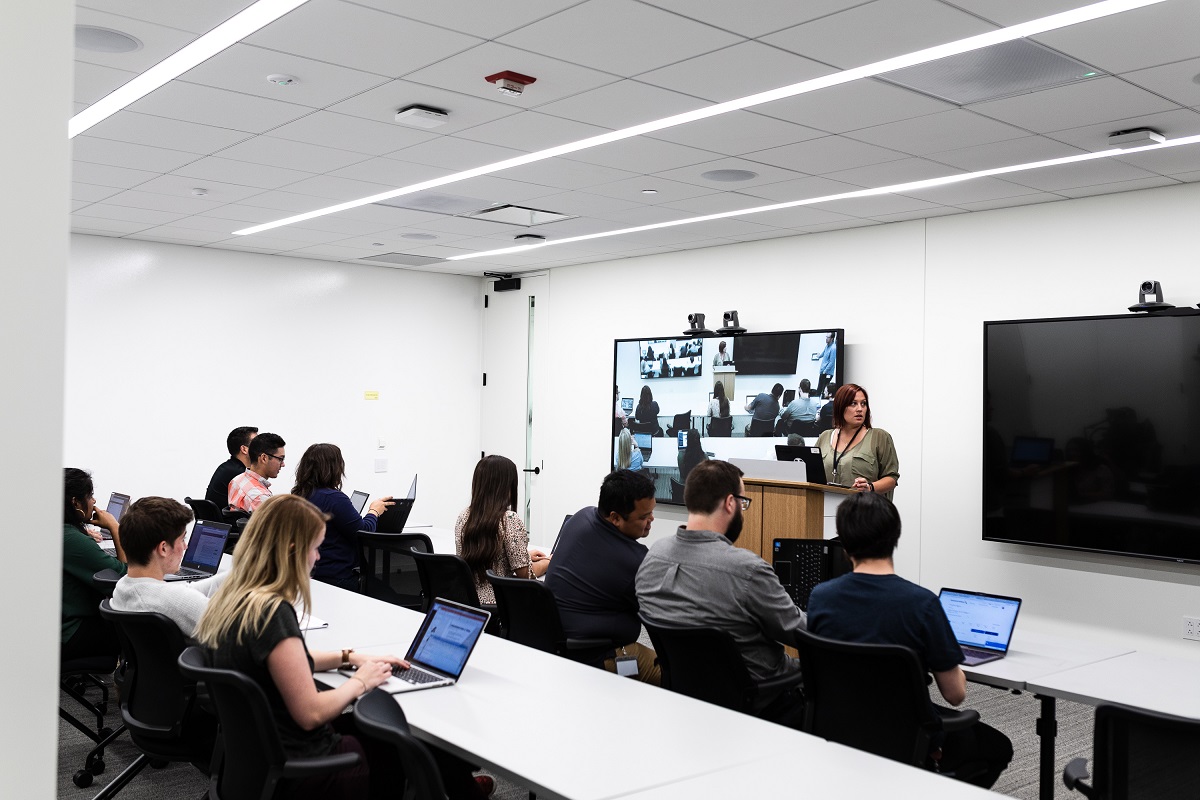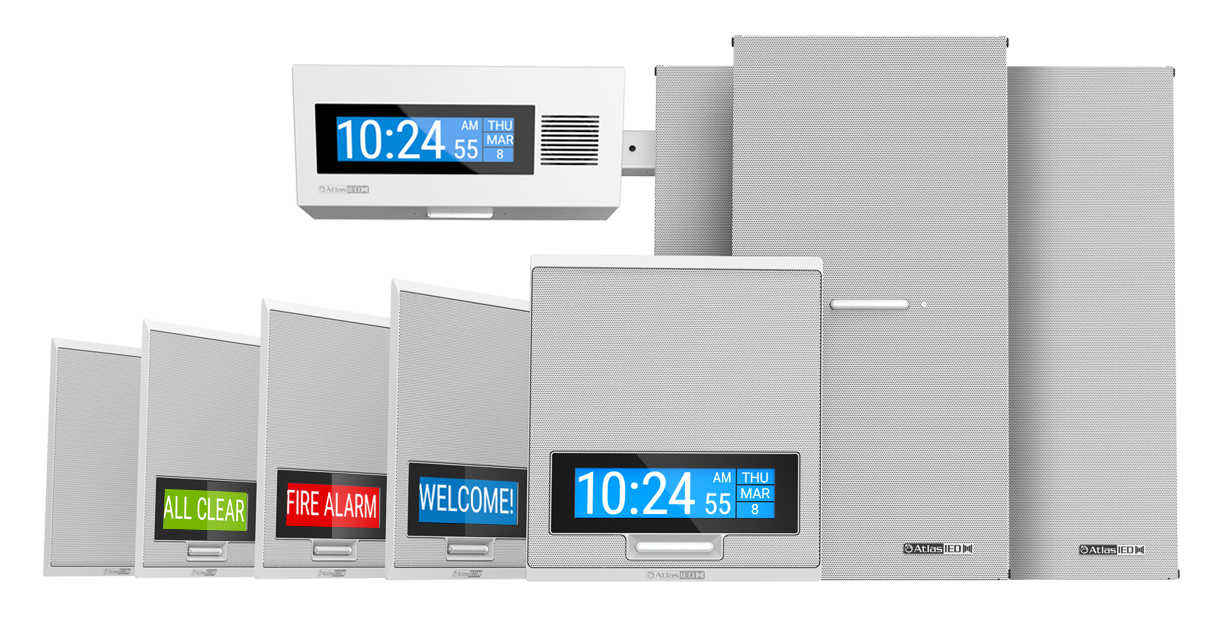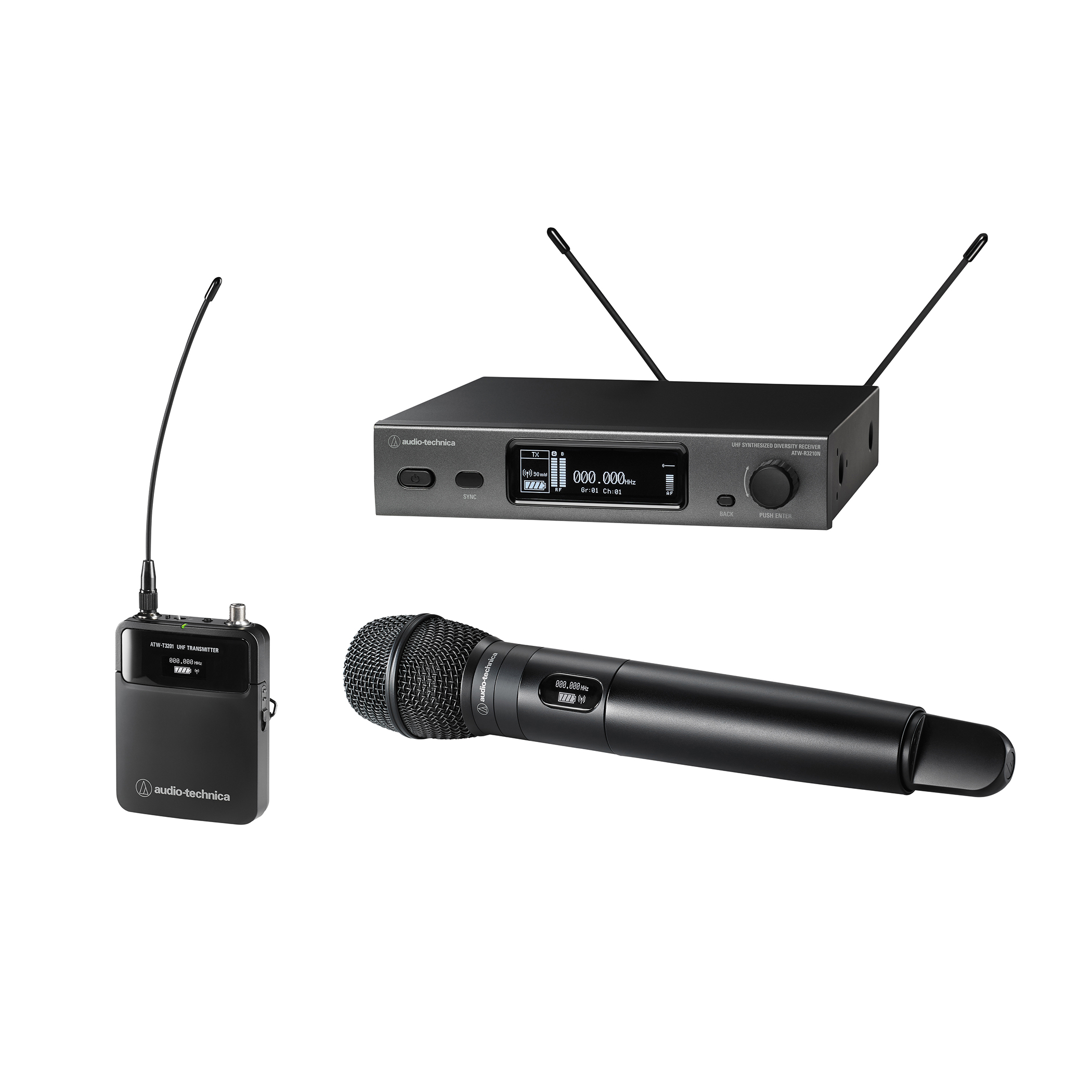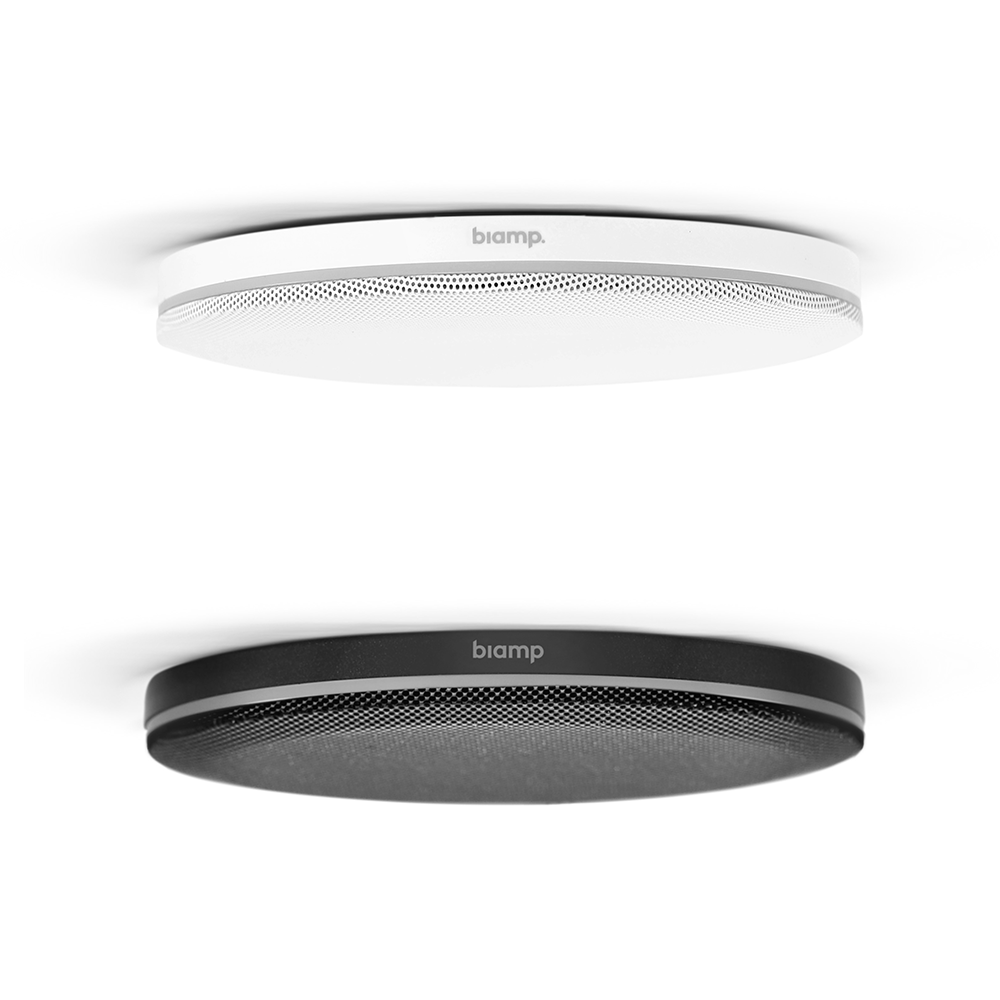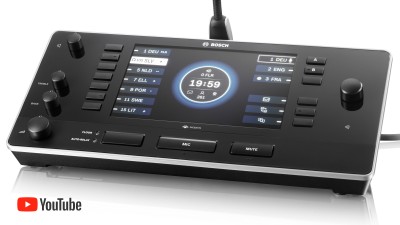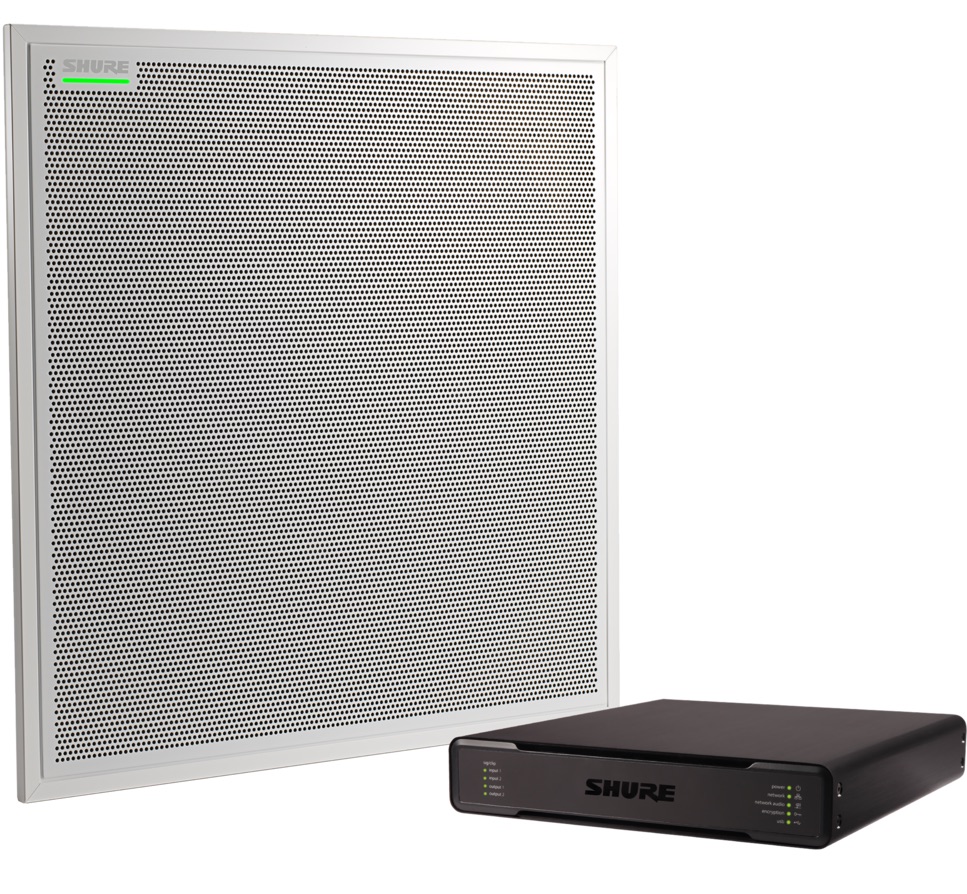The classroom experience has evolved quickly over the past decade, with technology playing an ever-growing role in how today’s students learn. One thing that hasn’t changed, however, is the importance of a good instructor. Those who are good at teaching may be able to use technology to their advantage, or they may not—either way, that technology should never get in the way of presenting information to their students.
“Instructors have enough to focus on,” said Ryan Baumann, AtlasIED product manager. “An overly complicated system will be underutilized or, even worse, resented by the faculty.”
That’s a common sentiment audio manufacturers are hearing from those working in the education market these days. “It’s all about ease of use,” said Andrew Low, manager of global marketing, integrated systems, Shure. “They want professors to walk in and have a seamless experience, without encountering problems that stifle the flow of their lectures. They need less interaction with technology, which means a seamless, always-on experience.”
Scroll through the gallery below to see the latest pro audio products for the classroom.
The consensus, which hasn’t changed much since chalkboards were state-of-the-art technology, is that content and conversation are the most important parts of a classroom environment. The learning experience should be enhanced—not replaced or altered—by technology.
“The desire is to maintain a high degree of clarity and intelligibility while minimizing physical interaction,” said Mark Donovan, applications engineering manager, professional markets, Audio-Technica. “In other words, they don’t want the technology to interfere with the experience.”
Clear the Way
Making this ideal scenario a reality is getting easier thanks in large part to classroom audio systems that address these concerns. For example, audio reinforcement options can help mitigate features that lead to sound quality issues in classrooms—hard surfaces like cement walls and large windows, for example—which can force soft-spoken instructors to speak louder than they’d like.
“That can be exhausting and unhealthy to do every day,” said Joe Andrulis, executive vice president, corporate development, Biamp. “Acoustical treatments can combat reverberation that distorts audio, while a voice lift system can ensure educators save their voice and that everyone hears what was said clearly. And with our Parlé Beamtracking microphones, we have created a portfolio of microphone options that yield high-quality audio even if the presenter moves around the room.”
The Parlé family of microphones features Beamtracking technology, which follows speakers no matter where they are in the room, ensuring the highest quality voice pickup—whether that’s from a teacher who’s standing or a student who’s sitting. Additionally, they require no microphone setup, reducing installation and programming time for integrators.
Consistent coverage is necessary not just for those in the classroom but for those outside it as well, as distance learning and session recording become more the expectation than the exception.
“We can arrange a system around the room, so wherever they move, everything is being picked up,” said Shure’s Andrew Low. “We’ll use an MXW lav mic on the teacher, then MXA910 lobes covering the students in the classroom, so they can eliminate that roving mic thing where you have to say, ‘Wait, hold on for the mic to come to you,’ which stifles the discussion. Plus, the recording quality is great.”
Classrooms can arrange up to eight separate adjustable MXA910 ceiling array microphone lobes to capture audio anywhere in the room. Autofocus technology fine-tunes the position of each lobe in real time for consistent sound even if participants lean back or stand up, while onboard IntelliMix DSP provides signal processing. To serve a variety of classroom settings, mounting options are available for any ceiling type, including hard ceiling, VESA pole mount, or wire rope suspension.
Going Beyond the Classroom Walls
When it comes to distance learning, clarity and intelligibility become crucial to classroom audio considerations. “While this may be relatively simple when only the instructor is involved, it becomes increasingly complex as you add student interaction from different learning sites,” said Audio-Technica’s Mark Donovan. “Maintaining the highest sound quality at the capsule is absolutely critical.”
Audio-Technica’s 3000 Series wireless systems address this requirement with the ATW-T3202, which comes with either an ATW-C510 dynamic or ATW-C710 condenser interchangeable cardioid capsule; the transmitter’s industry-standard thread allows for the use of four additional A-T capsules, plus other compatible capsules. The 3000 Series systems have an operating range of 300 feet and are available in two frequency bands—DE2 (470–530 MHz) and EE1 (530–590 MHz)—that provide a 60 MHz tuning range.
[Classrooms Embrace IP, Enhanced Intelligibility and Support for Distance Learning]
Connecting multiple satellite locations for a distance learning environment can require a significant amount of coordination and monitoring to ensure the system is up and running correctly when it’s needed—since, unlike a business conference call, a class that students are traveling to and paying to attend is not something you can simply reschedule because of a hiccup on the network. The Bosch DICENTIS wireless conference system features Smart Wireless Management, which allows the system to constantly monitor the availability and load of channels. When traffic increases, it seamlessly and automatically switches to free channels without interruption or interference.
Missouri-based Park University recently completed an installation of 41 distance learning spaces across the country featuring DICENTIS as the classroom miking system, which has helped improve the interactivity of the classes. “When students in Kansas City ask questions or make comments during class, their counterparts in California can hear them clearly and in real time, and vice versa,” reports Scott Ford, account manager at AVI Systems, which provided the project’s integration. “Plus, there’s no need to have an AV tech for setup and operation.”
“Uniformity of audio coverage is critical for most classroom audio systems,” said AtlasIED’s Ryan Baumann. “For example, consistent SPL is the whole point of voice lift applications. If the coverage isn’t even, you may still have students who are unable to hear as well as others, which defeats the intent of the system.”
AtlasIED IPX Series IP-enabled speaker systems use existing IT infrastructure and offer auto provisioning once it’s on the network. “Talk to Me” interoperability ensures the IPX units can work within any VoIP system, as they are open-platform engineered to communicate and be controlled by providers of unified communications software platforms and standard SIP PBX systems.
Push Forward
When thinking about what’s next for classroom audio, Biamp’s Joe Andrulis suggests the AV industry take an approach that’s traditionally been associated with live events: Consider audience engagement.
“As the classroom evolves, educators are challenged with accommodating all the different needs and learning styles of students,” he said. “We’re seeing schools respond with completely new approaches. The classroom is no longer thought of as four walls with an instructor at the front. Instead, the learning environment needs to be more fluid and free of technological barriers that can impede a great learning experience. This makes intelligible audio not only more challenging, but also more critical for students to interact and retain information. There’s a growing opportunity for integrator and manufacturing partners to be a part of that conversation and present innovative AV solutions to boost student engagement.”
And though we’ve come a long way, AtlasIED’s Ryan Baumann agrees that there’s still room to grow. “Modern AV systems have enriched the teaching experience and have the potential to increase the reach of the classroom to students who cannot otherwise participate. This is a wonderful advancement in the world of education,” Baumann said. “Those of us in this industry should be pushing the envelope and advocating for more use of these technologies, not simply because it is an industry that we love and that pays our bills, but because it can make a world of difference for so many.”
